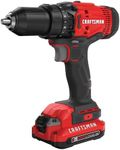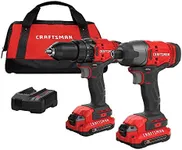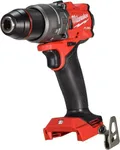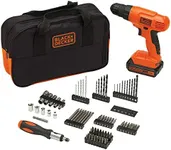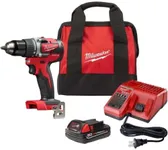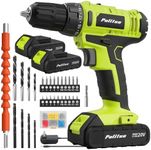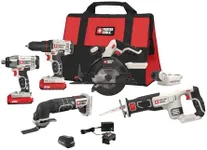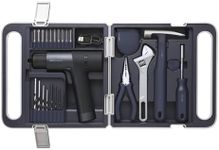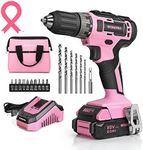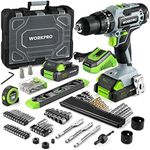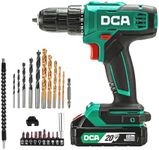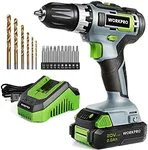Buying Guide for the Best Cordless Drills
When choosing a cordless drill, it's important to consider how you will be using it, as there are many models available with different features and capabilities. Think about the types of projects you’ll do most often, such as furniture assembly, DIY home repairs, or heavy-duty construction. This will help you focus on the most relevant specifications for your needs. Understanding the key features of cordless drills can help you make an informed choice and ensure the drill you buy is both comfortable and powerful enough for your projects.VoltageVoltage measures the power of the drill’s battery, and it determines how much force the drill can deliver. Higher voltage generally means more power, making the drill better suited for tough tasks like drilling into masonry or thick lumber. Lower voltage drills are lighter and easier to handle, which is great for smaller projects or work in tight spaces. Drills typically range from 12V to 20V. For light household tasks, 12V is often sufficient, but if you need to handle more demanding jobs, a 18V or 20V model could be a better fit.
Battery TypeMost modern cordless drills use lithium-ion (Li-ion) batteries, which are lightweight, have a longer life, and recharge more quickly than older nickel-cadmium (NiCd) batteries. Battery capacity, measured in amp-hours (Ah), indicates how long the drill will run on a single charge. A higher amp-hour rating means more runtime. If you plan to use your drill for extended periods or don’t want to recharge often, look for a drill with a higher Ah battery, while occasional users may find standard batteries more than adequate.
Chuck SizeThe chuck is the part of the drill that holds the drill bit. Common chuck sizes are 3/8-inch and 1/2-inch. A larger chuck can hold bigger bits, which is useful for heavy-duty jobs, while a smaller chuck is lighter and can handle most household tasks. Think about the types of projects and bits you’ll be using most often—if they are standard-sized, a 3/8-inch chuck will suffice, but if you need to use large hole saws or bits, consider a 1/2-inch chuck instead.
Speed and Torque SettingsSpeed, measured in revolutions per minute (RPM), and torque, the turning force, affect how efficiently the drill can handle different materials. Drills with variable speed and adjustable torque let you control how much power is applied. Lower speeds are ideal for driving screws, and higher speeds work best for drilling holes. If you need your drill for a range of tasks, look for one with both speed and torque adjustment to give you better control and prevent damage to your materials.
Weight and ErgonomicsThe weight and comfort of the drill are important, especially if you plan to use it for long periods. Heavier drills can cause fatigue more quickly, while lighter models are easier to handle and are often a better choice for overhead work or smaller users. Try to handle a drill before buying to see if the grip is comfortable and if you can easily operate the controls. If convenience and comfort are top priorities, prioritize lighter, ergonomically designed models.
Additional FeaturesSome drills come with extra features, like built-in lights to illuminate dark workspaces, belt clips for easy carrying, or quick-change chucks for fast bit swapping. Depending on your typical projects, some of these features might be very helpful. Consider which extras will make your tasks easier and more efficient, and look for those in your drill choice.
